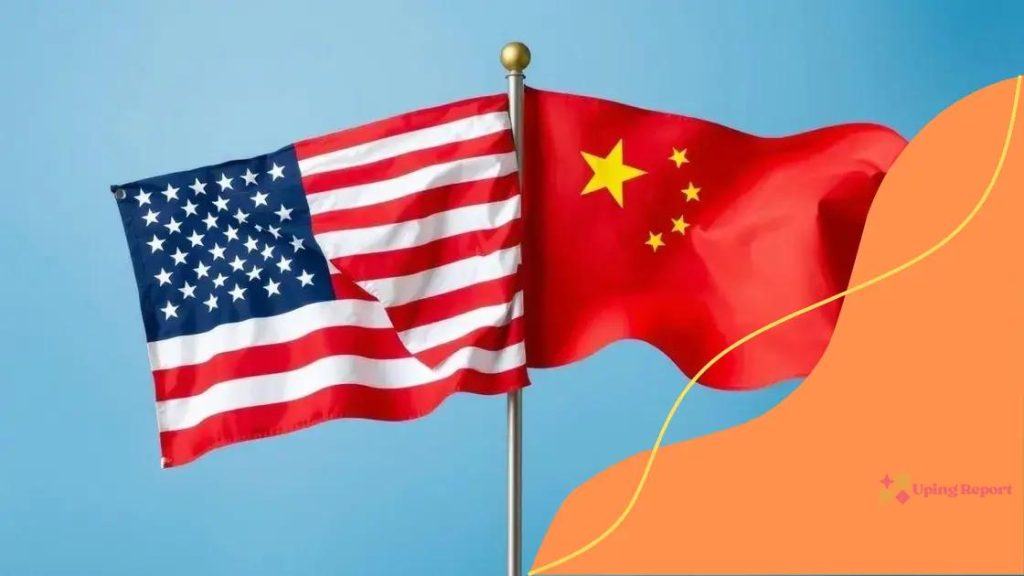U.S.-China trade talks continue: what’s at stake?

U.S.-China trade talks continue to shape economic relations, with key issues including tariffs, intellectual property rights, supply chain impacts, and opportunities for cooperation in technology and agriculture.
U.S.-China trade talks continue to shape the economic landscape. As negotiations unfold, many wonder how the outcome will impact everyday lives and global markets. Let’s explore what’s brewing behind the scenes.
the background of u.s.-china trade relations
The background of U.S.-China trade relations is complex and has evolved over decades. Understanding the history helps shed light on current negotiations. In the past, trade between these two nations was limited but grew rapidly as both economies expanded.
The Growth of Trade
Initially, trade began to flourish in the 1980s when China opened its market to foreign investments. This shift not only boosted its economy but also led to both countries establishing much stronger economic ties.
Key Events Shaping the Relationship
Several key events have shaped U.S.-China trade.
- The accession of China to the World Trade Organization in 2001
- Implementation of tariffs and trade barriers over the years
- Trade disputes concerning intellectual property rights
These events often led to friction, with both nations attempting to protect their interests. As trade continued to expand, challenges such as trade deficits emerged. The U.S. has often expressed concerns over the trade deficit with China, which has contributed to strained relations.
Despite the challenges, both nations recognize the importance of collaboration. Regular dialogues and meetings are held to address disputes and explore opportunities for mutual benefit. This ongoing conversation is critical, especially in sectors like technology and agriculture.
In conclusion, the history of U.S.-China trade relations is characterized by both cooperation and conflict. The evolving dynamics continue to influence global economic trends as both countries navigate their complex relationship.
key issues in the ongoing trade talks
The key issues in the ongoing trade talks between the U.S. and China play a crucial role in determining the future of their economic relationship. As both countries engage in negotiations, several critical points have emerged that need to be addressed for progress to be made.
Intellectual Property Rights
One of the most contentious topics is intellectual property rights. The U.S. has raised concerns about China’s practices regarding technology theft and forced technology transfers. Companies need strong protection for their inventions, and this issue has been a major sticking point.
Trade Deficits
Another significant issue revolves around the trade deficit. The U.S. faces a substantial trade deficit with China, leading to discussions on how to balance trade more effectively. Solutions may include increasing U.S. exports to China or reducing tariffs on certain goods.
- Strategies to enhance U.S. exports
- Reducing tariffs on products
- Implementation of fair trade agreements
Additionally, the economic policies of each country contribute to the complexities of negotiations. For instance, China’s state-controlled economy contrasts sharply with the market-driven approach of the U.S. This difference complicates the discussions as both sides try to find common ground.
Lastly, the trade of agricultural products has also become a significant focus. The U.S. seeks greater access to Chinese markets for its farmers, which is vital for states that rely on agricultural exports. This need for access creates further negotiation points as both countries work to accommodate each other’s economic necessities.
Overall, addressing these key issues is essential for achieving a more stable and productive trade relationship. Each of these topics reflects broader concerns that impact both nations and their respective economies.
impacts on global markets and supply chains

The impacts on global markets and supply chains from ongoing U.S.-China trade talks are significant and far-reaching. As these negotiations unfold, businesses around the world are keenly observing the outcomes since they will influence various aspects of trade and economic stability.
Effects on Global Markets
One immediate effect is the volatility in global stocks. Uncertainty surrounding trade agreements often causes fluctuations in stock prices. Investors react quickly to developments, affecting market confidence and investment choices.
Shifts in Supply Chains
Additionally, the trade discussions have led companies to reassess their supply chains. Firms are looking for ways to minimize risk, especially those heavily reliant on imports from China for components and raw materials. Many are considering diversifying their suppliers or relocating manufacturing closer to home.
- Identifying alternative suppliers outside of China
- Investing in local production facilities
- Utilizing technology to improve logistics
This strategy aims to reduce dependency on a single market, which can create vulnerabilities. As a result, we see a surge in supply chain resilience planning, helping businesses remain agile in response to any disruptions.
Furthermore, trade tariffs affect pricing globally. When tariffs are implemented on goods from China, it leads to higher prices for consumers not just in the U.S. but also in other countries that rely on these products. This could constrain consumer spending and impact overall economic growth.
Lastly, these trade discussions have a ripple effect on international relations. Countries that depend on stable U.S.-China relations may face challenges as they navigate the effects on their own markets. Trade dynamics can shift alliances, presenting both opportunities and challenges in global commerce.
how businesses can prepare for changes
Understanding how businesses can prepare for changes during U.S.-China trade talks is vital for maintaining competitiveness. With the dynamics of trade negotiations constantly evolving, companies must stay proactive to adapt to potential impacts.
Conducting Risk Assessments
The first step is conducting thorough risk assessments. Companies should evaluate their current supply chain dependencies, especially those linked to China. Identifying vulnerabilities helps in strategizing for uncertainties early on.
Diversifying Suppliers
Diversification is key. Companies should consider establishing relationships with multiple suppliers across different regions. This reduces risks associated with supply disruptions and can lead to more stable pricing.
- Explore suppliers in Southeast Asia
- Build strong local partnerships
- Invest in technology for efficient sourcing
Furthermore, businesses should look into investing in local production capabilities. Such investments can shield companies from international trade fluctuations. Local production not only mitigates risks but also can be a selling point.
Another strategy involves staying informed about policy changes. Engaging with trade associations or industry groups can provide valuable insights into upcoming regulations and market shifts. Companies that are agile and informed can navigate changes more effectively.
Lastly, companies should focus on improving operational efficiency. Streamlining processes and investing in technology can help reduce costs. These improvements will allow businesses to remain competitive regardless of trade outcomes.
the future of u.s.-china economic cooperation
The future of U.S.-China economic cooperation remains uncertain as both nations navigate complex trade dynamics. Cooperation could be essential for global economic stability, yet challenges persist.
Potential Areas for Collaboration
Despite existing tensions, there are areas where both countries might find common ground. For instance, issues like climate change and public health offer opportunities for joint efforts. Both nations can benefit significantly from sharing technology and resources to combat global challenges.
Trade Agreements and Policies
Looking ahead, trade agreements will play a crucial role in shaping economic ties. The possibility of new agreements could foster a more balanced trading environment. This might involve lowering tariffs on certain goods and improving market access.
- Creating fair competition frameworks
- Enhancing trade in agriculture and technology
- Establishing clearer regulations for dispute resolution
However, the implementation of these agreements requires strong political will. Both governments must prioritize constructive dialogue over conflict to achieve promising outcomes.
Another factor influencing the future is technological collaboration. The rapid pace of innovation means that both countries could lead in various sectors, such as renewable energy and artificial intelligence. By working together, they can drive growth and ensure technological advancements benefit both economies.
Additionally, public perception and domestic policies can also shape the future of economic cooperation. How citizens view trade and collaboration impacts government decisions. Increasingly, leaders must consider public opinion while negotiating international agreements.
FAQ – Frequently Asked Questions about U.S.-China Trade Relations
What are the main issues in U.S.-China trade talks?
Key issues include intellectual property rights, trade deficits, tariffs, and agricultural trade access.
How can businesses prepare for changes in trade policies?
Businesses can conduct risk assessments, diversify suppliers, invest in local production, and stay informed about policy changes.
What impact do U.S.-China trade relations have on global markets?
Trade relations influence stock market volatility, pricing of goods, and overall economic stability worldwide.
What opportunities exist for U.S.-China cooperation?
Opportunities include collaboration on climate change, technology, and public health to address global challenges.
